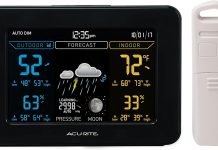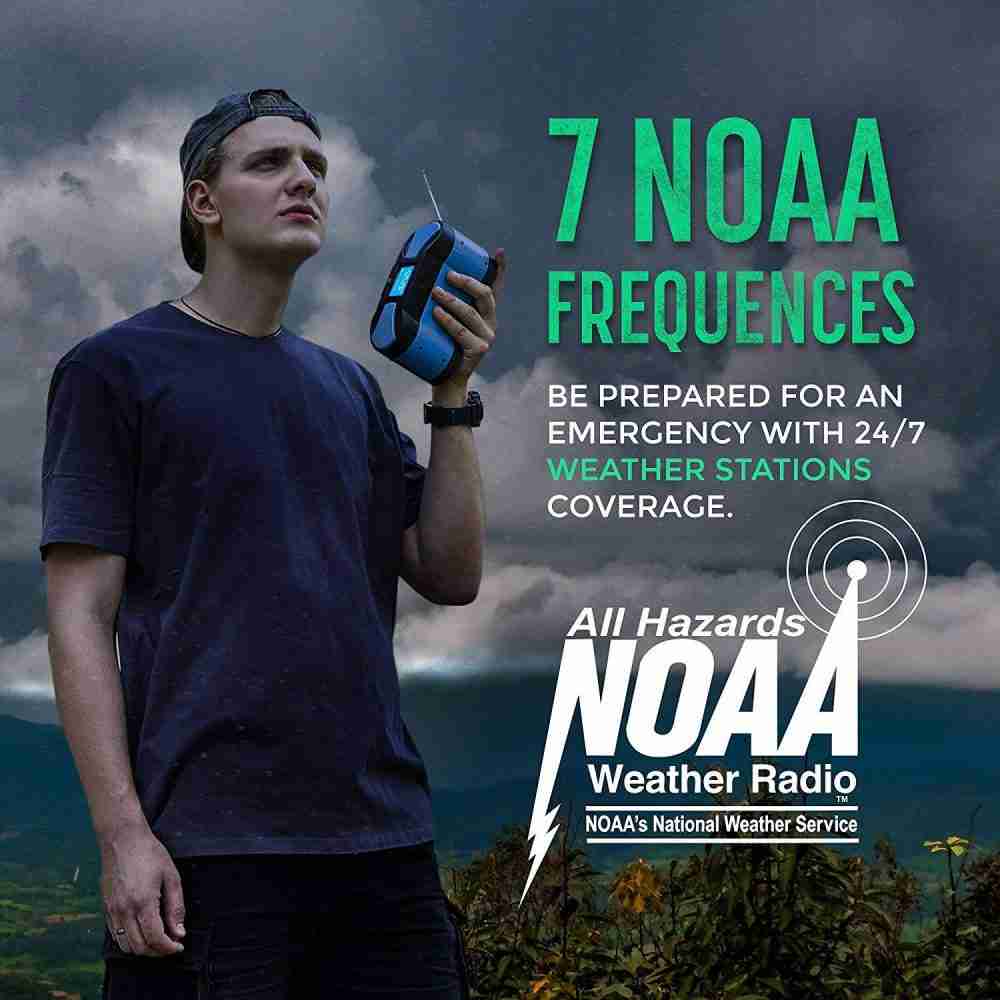Have you ever wondered what it truly means when the weather forecast predicts a 50% chance of rain?
We have all been there, pondering whether to bring an umbrella or risk getting caught in an unexpected downpour.
In this article, we will decipher the mystery behind this commonly used weather forecast term and provide you with a clear understanding of what a 50% chance of rain entails.
Buckle up because we are about to make your decision-making process much more manageable when preparing for potentially rainy days!
Weather Forecast Terminology
Understanding Probability in Weather Forecasts
One term that often baffles us regarding weather forecasts is “chance of rain.” We all encounter weather forecasts every day, whether we’re planning our outdoor activities, deciding what to wear, or making travel arrangements.
Understanding the terminology used in these forecasts is vital to make informed decisions. In particular, probability, expressed as a percentage, is crucial in determining the likelihood of rain. Let’s delve into the intricacies of interpreting the chance of rain and what it means for our day ahead.
Interpreting Chance of Rain
The chance of rain is a prediction that indicates the possibility of rainfall occurring at a specific location within a specified time frame. It is often expressed as a percentage, representing the probability of rain. This probability is determined based on various meteorological factors and the available data analyzed by meteorologists.
What Does ‘50% Chance of Rain’ Mean?
Let’s focus on the scenario where we hear the forecast saying, “There is a 50% chance of rain today.” This means that meteorologists have assessed the available data and determined an equal likelihood of rain occurring as there is no rain. In simpler terms, if we have a 50% chance of rain, there is an equal likelihood of experiencing rain or not experiencing rain.
Probability in Weather Forecasts
Quantifying Uncertainty
Weather forecasts are never specific but provide valuable insights into the expected weather conditions. Probability is essential in weather forecasts as it quantifies the degree of uncertainty associated with detailed weather conditions. It helps us understand the likelihood of weather events like rain, snow, or thunderstorms. By expressing probability as a percentage, meteorologists aim to communicate their confidence level in their forecast.
Meteorological Factors Considered
Meteorologists consider various meteorological factors when determining the probability of rain. These factors include atmospheric conditions, such as humidity and air pressure, as well as the movement of weather fronts and the presence of precipitation in the surrounding areas. By analyzing these factors alongside historical weather patterns and data from weather models, meteorologists can make informed forecasts and assign probability values to potential weather events.
Weather Models and Data Analysis
To forecast weather accurately, meteorologists utilize advanced weather models. These models incorporate vast amounts of data, including atmospheric measurements, satellite imagery, and historical weather patterns. By simulating the atmosphere’s behavior, these models can generate predictions of future weather conditions. Meteorologists analyze the output from these models and compare them with real-time observations to refine their forecasts and assign probabilities to various weather outcomes.
Communicating Forecasts
Communicating weather forecasts effectively is essential for the public to make informed decisions. Meteorologists strive to present the probability of rain in an easily understandable manner. By expressing possibility as a percentage, they offer a tangible measure of the likelihood of rainfall occurring. Meteorologists often use visual aids, such as maps and graphs, to convey the forecasted weather patterns and probabilities. This ensures that we can interpret the information quickly and plan accordingly.
Understanding the Chance of Rain
Defining Chance of Rain
When we see the phrase “chance of rain” in a forecast, we often wonder what it means. In simple terms, the chance of rain represents the probability of rainfall occurring at a specific time and location. It is expressed as a percentage, indicating the likelihood of rain. Understanding this concept is crucial for deciding outdoor activities, as it helps us anticipate the potential weather conditions we may encounter.
Interpreting Probability
The probability associated with the chance of rain reflects meteorologists’ assessment of the available data and the likelihood of rain occurrence. For example, a 50% chance of rain means there is an equal chance of precipitation occurring as there is no rain occurring. Similarly, a 30% chance of rain means there is a lower likelihood of rain than without rain. By interpreting these probability values, we can gauge the probability of precipitation and plan accordingly.
Correlation with Rainfall Amount
While the chance of rain indicates the probability of rainfall occurrence, it does not provide information about the amount of rain that may occur. Recognizing that a higher chance of rain does not necessarily mean more rain will fall is essential. Conversely, a lower chance of rain does not mean no rain or mere drizzles. The intensity and duration of rainfall are separate factors that need to be considered when evaluating the impact of rain on our activities.
Impact on Outdoor Activities
The chance of rain significantly impacts our plans for outdoor activities. Understanding the probability of precipitation allows us to evaluate the risk of inclement weather and make informed decisions. For instance, if there is a 70% chance of rain, it may be best to postpone outdoor activities or have a contingency plan in case of rain. On the other hand, a 20% chance of rain may indicate a lower risk, allowing us to proceed with our goals while keeping an eye on the weather conditions.
Factors Influencing Probability
Frontal Systems and Atmospheric Conditions
Frontal systems, which are boundaries separating air masses with different properties, are a crucial factor influencing the probability of rain. When warm and cold air masses collide, there is an increased likelihood of precipitation occurring along these fronts. Additionally, atmospheric conditions, such as humidity, air pressure, and temperature, play a significant role in determining the probability of rain. Combining these factors provides meteorologists with valuable information to assess the likelihood of rain.
Local Topography and Geography
An area’s local topography and geography can influence the probability of rain. Mountains, hills, and bodies of water can alter airflow patterns and impact the distribution of precipitation. For example, mountainous regions often experience orographic rainfall, where moist air is forced to rise over the mountains, resulting in enhanced rainfall on the windward side. Meteorologists consider these geographical factors when assigning probability values to different areas.
Time of Year and Seasonal Variations
The time of year and seasonal variations also influence the probability of rain. Different seasons have distinct weather patterns and varying probabilities of rainfall. For instance, the summer season may have a higher chance of rain due to thunderstorms, while winter may have a higher possibility of snowfall. Understanding the seasonal variations and the associated probabilities helps us anticipate the weather conditions we will likely encounter in different months.
Microclimates and Localized Weather Patterns
Microclimates and localized weather patterns further complicate the assessment of the probability of rain. Due to these localized weather patterns, specific areas within a region might have higher or lower rain chances than others. For example, coastal areas may experience more frequent fog or drizzle, while inland regions may have a higher probability of thunderstorms. Being aware of these microclimates helps us interpret the forecasted probabilities accurately, especially when planning activities in specific localities.
Interpreting 50% Chance of Rain
Median Probability
A 50% chance of rain represents the median probability between rain and no rain occurrence. This means there is an equal likelihood of experiencing or not experiencing rain.
Understanding that this probability value indicates an equal chance for both outcomes rather than favoring one over the other is crucial. This balance between rain and no rain signifies the uncertainty associated with the specific weather conditions.
Equal Likelihood of Rain or No Rain
When we encounter a forecast predicting a 50% chance of rain, it means that meteorologists have determined there is an equal likelihood of rain occurring as there is for no rain. While this value may seem moderate, it is essential to remember that it indicates considerable uncertainty. The forecast has identified that the conditions favor both outcomes equally, making it challenging to predict which product will prevail.
Impact on Outdoor Plans
A 50% chance of rain significantly impacts our outdoor plans. While there is an equal likelihood of experiencing rain or not, it is essential to consider the specific activities we have planned and their susceptibility to precipitation. If our chosen action cannot proceed in wet conditions or if we wish to avoid getting caught in a downpour, it may be prudent to reschedule or have a backup plan.
Preparing for Rainy Conditions
Even with a 50% chance of rain, preparing for wet weather is wise. Carrying an umbrella, wearing appropriate clothing, and considering indoor alternatives for outdoor plans can help us adapt to unexpected rain showers. By being prepared for rainy conditions, we can ensure that our day is not entirely disrupted if it does rain, even if the 50% chance turns into a 100% reality.
Comparing Probability Values
Higher and Lower Probability Values
When comparing probability values, it is essential to understand their implications. Higher probability values, such as 70% or 80%, indicate a greater likelihood of rain occurring than lower probability values, such as 20% or 30%. A higher probability suggests that the conditions favor rainfall, making it more probable. Conversely, lower probability values indicate that the conditions are less favorable for rain, increasing the likelihood of no rain.
Cumulative Probability over Time
An important aspect to consider is rain’s cumulative probability over a specified period. For example, a forecast that indicates a 50% chance of rain daily for a week implies a cumulative probability of precipitation occurring at least once. This cumulative probability increases as the number of days with a 50% chance of rain increases. By understanding this cumulative probability, we can better prepare for extended periods of potentially rainy weather.
Frequency of Rain Events
Probability values also indicate the frequency of rain events. A higher probability of rain suggests a higher likelihood of frequent rain events occurring within the specified time frame. On the other hand, lower probability values indicate less frequent rain events. Understanding the frequency of rain events helps us gauge the overall rainfall pattern and adjust our plans accordingly.
Factors Affecting Accuracy
Lead Time and Forecast Period
Multiple factors, including the lead time and forecast period, can influence the accuracy of weather forecasts. Lead time refers to the duration between when the forecast is issued and when the forecasted weather is expected to occur. Longer lead times introduce more uncertainty as weather conditions change significantly. Additionally, the forecast period, whether a few hours or a few days, affects the forecast’s accuracy due to the evolving nature of atmospheric conditions.
Quality of Data and Observations
To make accurate forecasts, meteorologists rely on high-quality data and observations. The availability and accuracy of data at various atmospheric levels significantly impact the precision of weather predictions. Data obtained from weather satellites, weather stations, weather balloons, and other observation systems provide crucial information about the current state of the atmosphere. Any discrepancies or limitations in the data can introduce uncertainties in the forecast.
Model Accuracy and Skill
Weather models, which simulate the atmosphere and generate forecasts, are crucial in predicting weather conditions. These models’ accuracy and skill directly affect the forecasts’ accuracy. Improvements in modeling techniques, including higher spatial and temporal resolutions, enhance the accuracy of projections. However, uncertainties and limitations within the models and their ability to capture complex atmospheric processes can still lead to errors in the forecasted probabilities.
Human Interpretation and Expertise
While weather models and data analysis assist in making forecasts, it is essential to acknowledge the role of human interpretation and expertise. Meteorologists analyze the data output from models, incorporate their knowledge of local weather patterns, and apply their expertise to refine the forecasts.
However, the interpretation of data and human judgment can introduce subjective factors and potential errors into the forecasting process. Meteorologists continuously strive to refine their skills and improve forecast accuracy.
Improvements in Forecasting
Advancements in Weather Models
Advancements in weather models have significantly contributed to the accuracy of weather forecasts. Increased computing power has allowed higher-resolution models to capture finer details of atmospheric processes. These advanced models provide more reliable predictions and improved data assimilation techniques, which blend observed data with model output. Ongoing research and development continue to enhance model accuracy, leading to more accurate probability forecasts.
Integration of Big Data and Machine Learning
The integration of big data and machine learning techniques has revolutionized weather forecasting. Forecast models can identify patterns and make more accurate predictions by incorporating vast amounts of historical and real-time data from various sources, including satellite imagery, ground-based observations, and weather sensors. Machine learning algorithms can analyze extended data sets to uncover relationships, improving our understanding of weather patterns and enhancing forecast precision.
Importance of Localized Forecasts
Localized forecasts are invaluable for planning activities and decisions that rely on accurate weather predictions. While broader weather forecasts provide an overview of weather conditions at a regional or national scale, localized forecasts drill down to specific areas, considering the unique topography, geography, and microclimates. These localized forecasts help us make more precise plans by accounting for weather conditions that may impact our immediate surroundings.
Communication and Education
Improving the communication of weather forecasts and educating the public about their interpretation are crucial aspects of enhancing forecast understanding. Meteorological organizations strive to present estimates user-friendly, using clear language and visual aids to convey the probabilities effectively. Additionally, educating the public about probability values, the factors influencing weather forecasts, and the uncertainties associated with weather predictions can empower individuals to make informed decisions based on the available information.
Planning According to Forecast
Considering Other Factors
While weather forecasts provide valuable insights, it is essential to consider other factors when making plans. Personal preferences, individual risk tolerance, and the specific nature of activities play significant roles in decision-making. Additionally, considering other reliable sources of weather information, such as mobile applications or local meteorological services, can provide a broader perspective and help validate the forecast’s accuracy.
Alternative Sources of Weather Information
In addition to official weather forecasts, alternative sources of weather information can provide supplementary insights. These sources include weather apps, websites, and social media accounts that offer localized weather updates, real-time radar imagery, or forecasts from independent meteorologists. While using alternative sources, verifying their credibility and cross-reference information is crucial to ensure accuracy and consistency.
Safety Precautions
Weather forecasts, including the probability of rain, play a significant role in assessing safety risks. If outdoor activities involve potential hazards, such as lightning or strong winds, it is essential to prioritize safety and consider rescheduling or seeking shelter if severe weather is anticipated. Staying informed about weather warnings or watches issued by meteorological authorities is vital to protecting ourselves and others from dangerous weather conditions.
Flexibility in Plans
Given the uncertainties of weather forecasts, maintaining flexibility in our plans is essential. Unexpected weather changes can occur, even with the most accurate predictions. We can adapt to changing weather conditions and adjust our plans by remaining flexible. Keeping backup options or alternative activities in mind ensures we can still enjoy our day, even if the weather doesn’t go as initially predicted.
Conclusion
Interpreting Weather Forecasts
Understanding weather forecasts, particularly the probability of rain, empowers us to make informed decisions about our daily activities. By comprehending the terminology used in weather forecasts, we gain valuable insights into the likelihood of rain occurring and can better plan for potential weather changes.
Informed Decision-Making
Probabilities in weather forecasts quantify the uncertainty associated with specific weather outcomes and allow us to accurately estimate the chances of rain. Applying this knowledge to our decision-making processes ensures that we are prepared for potential weather scenarios, reducing the impact of unforeseen weather changes on our plans.
Adapting to Weather Changes
Weather conditions are constantly evolving, and the accuracy of forecasts is continually improving. By staying informed about weather forecasts, being prepared for rainy conditions, and remaining flexible in our plans, we can effectively adapt to weather changes and make the most of our day, rain or shine.
Remember, even with a 50% chance of rain, the unpredictable nature of weather means that preparedness and flexibility are essential.






































